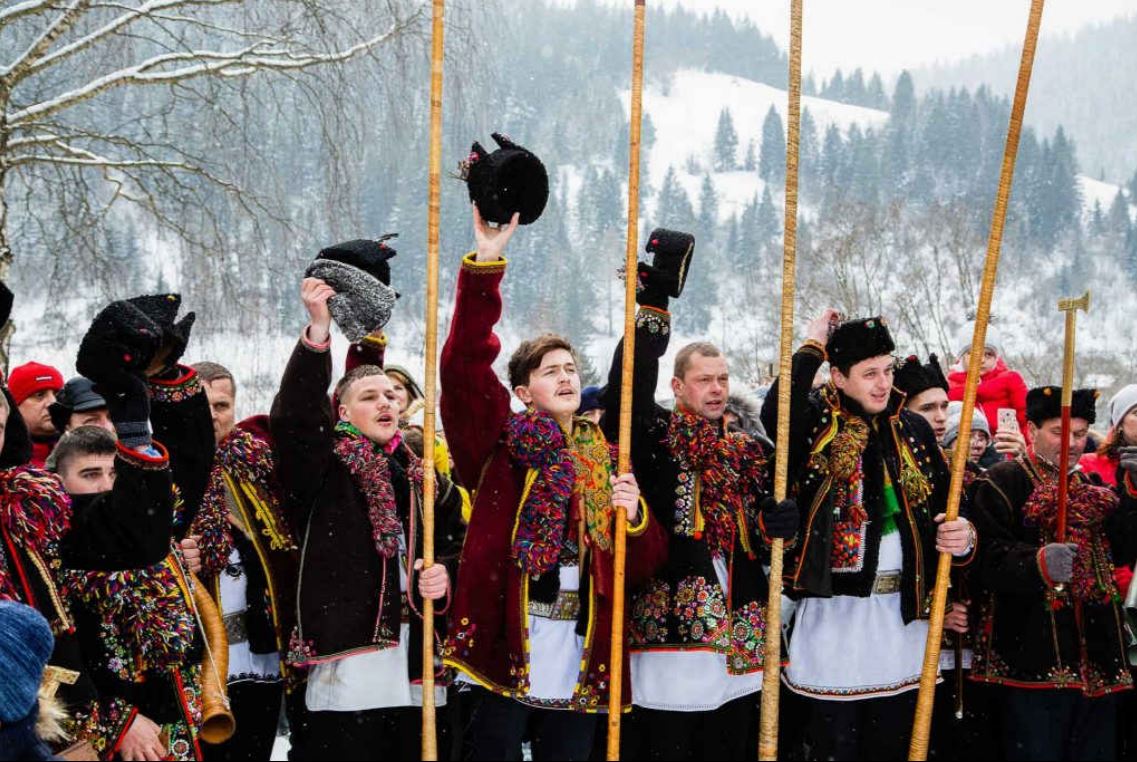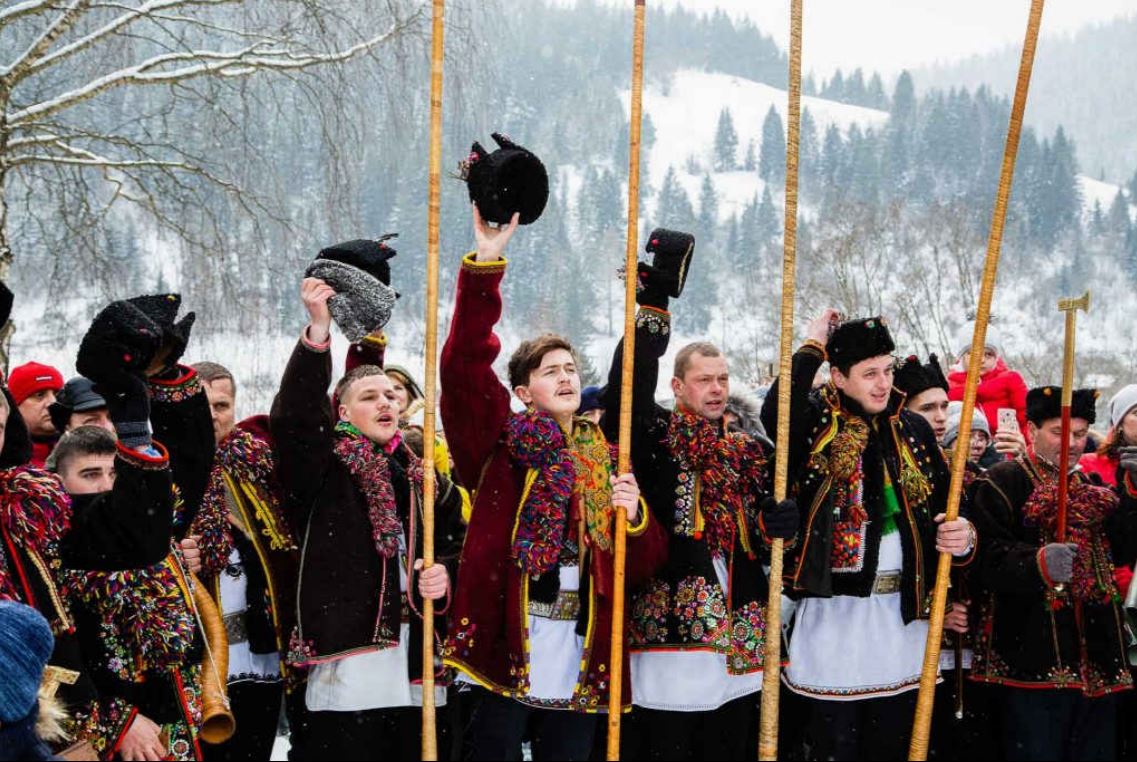Neither adoption of Christianity nor the Soviet bans could break this lasting tradition: the singing of men and the ritual of Koliada in this village in the heart of the Carpathian Mountains.


Bans of Koliada
Being an observance associated with religion, Koliada was banned twice. First, it was called a pagan ritual when Christianity became active in the Hutsul region. A writer Stanisław Vincenz writes about it in his book “On the high polonyna” (polonyna is a meadow in the Carpathians — tr.) as he speaks about the year 1830.
“We’re glorifying the birth of the sun, but we can equally be glorifying the birth of Jesus Christ, — says ethnographer Ivan Zelenchuk as he’s leafing through this book. Petro Shekeryk-Donykiv, a local writer, already calls Koliada a mobile church at around the same period, and the new carols were being written by the priests together with Hutsuls.”
In the Soviet times, church was banned, and Koliada was banned along with it. For this reason, Hutsuls went carolling secretly. Ivan Zelenchuk speaks about how they went carolling in the heights so that nobody could see them because it was considered a bad deed. In cities, the lyrics of carols could be copied with the name of Jesus replaced with Lenin because the KGB (the main security agency for the Soviet Union — tr.) could persecute the carolers.
Each Hutsul village has two parts. The bottom, where typically half of the village’s population lives, that’s in the valley on the river banks. And the other part of the village in the mountains is called ‘the heights’. The houses are scattered with the distance of around a kilometre between each other so that it’s convenient to do animal farming. In those times, it was unlikely that somebody would go to the mountains to check if anybody’s carolling or not. So, Koliada carried on only in the heights:
— My mother would always go for Koliada to her sister in Krasnoillia. She used to say: “I’ll go to visit my sister Mariika Shoivorovska on Christmas.” — “Why?” — “They live high in the mountains and let the carolers in.”
Koliada started being revived in the times of Perestroika (a period in the history of the Soviet Union around the 1980s — tr.). People realised that the repression system was no longer so powerful, and they started cautiously carolling openly. Ivan Zelenchuk believes that it was in the Verkhovyna region that Koliada was revived, and Kryvorivnia was the first village doing that because it has its ancient custom, and the people were only waiting for this possibility.
The man remembers how once the carollers came when the family were already sleeping. At that time, it was forbidden to go carolling, you could be in danger especially if you worked in public office. And there were teachers in the ethnographer’s family:
— At two in the morning, we heard somebody carolling near the house. No way! And then I went out and saw there were carolers. We opened the door and invited all the carolers inside, we laid the table with what we had. We put the treats on the table, and they were carolling — that was the first Koliada. And then they invited me to join them in carolling. I regret not going with them. I didn’t because I had a job at that time.
People say there lived an old man in the village. Not only did he know the lyrics of all carols, but he also joined a company of carollers in his old age, after an almost fifty year long break.
When Koliada was revived again, even such old men, who could barely walk out of their house, went carolling together with the youth. The tradition didn’t die because people who remembered it still lived, and they didn’t have to start from scratch.
Bereza Ivan Zelenchuk remembers that in Kryvorivnia the church wasn’t closed, and here came a company of carollers from Verkhovyna because their church was burnt down:
— So, those from Verkhovyna came for plyes near our church, and some of our people from Kryvorivnia joined them too, and they came for plyes near the church almost every year. And that was something, you know, when you heard that plyes, it really hurt: there was nothing forbidden, there was nothing anti-state in those carols.
Anti-Soviet texts did exist: about the year 1947 when the locals were exiled to Siberia, there were carols about the Ukrainian Insurgent Army — those carols were banned.
When practicing religion openly was allowed, there were only one or two companies of carollers in the village, but later they formed one for each hamlet.
Rozkoliada
After twelve days of carolling, the company meets for Rozkoliada (end of Koliada — tr.) at their bereza’s house, they carol for him and his family. After carolling, they drink from the bell and thank him for the treat. Bereza and the fiddler stand in the middle, and the carollers dance all the plyeses they know around them. Then, bereza comes to each caroller in turns, sings to him as a sign of gratitude, and lets him kiss the cross. They all ask the Lord to let them live until the new Koliada next year:
— On Epiphany, we go to the river, there we dance the plyeses, kiss berezas and each other goodbye.
If some caroller misbehaved, they let him kiss a shovel with a girl’s face painted on it. This observance of Rozkoliada is the most touching moment because the men, who went carolling together for two weeks, are saying goodbye.
